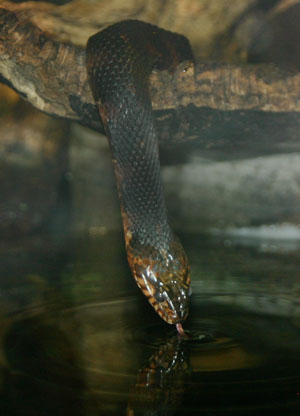So, when you become an experienced photographer, most of the photographs you take are impressive, compelling, and technically competent, right? In other words, a high percentage of shots are “keepers?”
Um, no.
 The truth is, even professionals working high-dollar assignments and presenting stunning images to magazines only keep twenty-five to forty percent of what they shoot, on average, and this is without resorting to the new digital technique of “try it and see what happens.” Controlling every aspect that might go into an image is next to impossible, and even if it weren’t, we probably wouldn’t be very impressed with photos that were meticulously staged. But overall, many, many photos go into the trash, and I’m no exception. My keeper rate runs 40-66%, which sounds great in comparison, but it may simply mean I’m less critical and demanding than others.
The truth is, even professionals working high-dollar assignments and presenting stunning images to magazines only keep twenty-five to forty percent of what they shoot, on average, and this is without resorting to the new digital technique of “try it and see what happens.” Controlling every aspect that might go into an image is next to impossible, and even if it weren’t, we probably wouldn’t be very impressed with photos that were meticulously staged. But overall, many, many photos go into the trash, and I’m no exception. My keeper rate runs 40-66%, which sounds great in comparison, but it may simply mean I’m less critical and demanding than others.
Case in point: this pic. If you recognized it for what it is, congratulations! You have the ability to spot subtle patterns and an odd, very atypical, environment. If not, you shouldn’t feel bad. There are images I’ve taken that I examine on the light table or computer monitor, sometimes even twisting them around, and wonder what it was I thought I was doing. This one, actually, I recognized immediately, partially because it was in context in a series. But there’s no denying that it’s weird.
I had an opportunity for a rare perspective and took it gladly, and happen to like the result, if only for the idea that it’s an odd angle and inherently confusing image. Would most professionals keep this image? Probably not. Though the possibility might have been higher had I captured one detail that I simply could not get my timing down with.
If it helps, here’s another frame from the series. Does that work better?

So, a few weeks back at the North Carolina Zoological park in Asheboro, an Eastern Cottonmouth Water Moccasin (Agkistrodon piscivorus piscivorus) showed an unusual amount of activity in that it was not only moving, but actually exploring within its semi-aquarium housing. Visible here is a trait that is usually hard to observe: it’s extending its tongue into the water. No, snakes do not drink that way – their tongues are (more or less) olfactory organs, “smelling” the air to determine what’s nearby, usually in search of food. And they can also do this in the water, too.
Since the display housing was half-aquarium, it was a simple matter to crouch down and get some shots from under the water surface, too. So what you’re seeing above is the tip of the snake’s nose, from beneath a reflective water surface which mirrors not only the submerged nose, but also the details of the habitat. Something I would be very unlikely to ever capture in the wild.
The detail I missed, which would have added a lot to the image yet made it more of a giveaway, was the tongue extended. I caught it for the above-surface pic, but not while below (in my defense, it’s a brief action and the lighting was poor enough to require manual focus, but that’s just whining).
So, for all that, is it a keeper? Well, I like it just for its esoteric value, so it stays, but the chances of actually selling it to anyone remain slim. Too confusing, not artistic, and not demonstrative of behavior, markings, or even habitat. If I were mercenary about my stock, it’d be in the trash. Should I actually get the opportunity again and get the timing right this time, it may yet end up there.
There’s a side lesson to this, as well. Many beginning photographers get discouraged because their images don’t look the way they imagined, or as good as someone else’s. They sometimes get the mistaken impression that a truly good photographer won’t produce crap. But this isn’t true at all – good photographers simply don’t show them to you.
And others make blog posts out of them…




















































